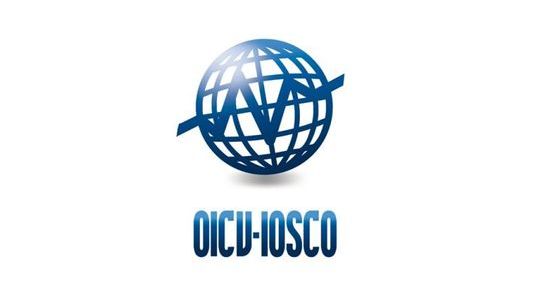Sustainable investing – what is it and what is the future of sustainable investing in Asia?
By Kate Hodson, Ogier, Hong Kong
Published: 27 September 2019
Until recently the question of sustainable or ESG investing was not on the agenda of the vast majority of asset managers in Asia. One might have been told "ESG is not relevant to our strategy", "we meet ESG requirements by screening out industries such as arms, tobacco, gambling and alcohol" or that "we focus on financial returns and this is a topic best left for governments and NGOs".
Some of these sentiments certainly persist today. However, an ever-increasing number of Asian asset managers now acknowledge ESG as an important non-financial metric that needs to be analysed and accounted for as part of the investment process, particularly as ESG behaviour can be shown to play into financial outcomes.
Furthermore, there are a growing number of Asian asset managers which have constructed strategies focusing on sustainability or "impact" as a core part of their investment objective. Appetite for these types of strategies appears to be on the rise.
However, to be able to convert this appetite into actual investments, managers will need to demonstrate commitment and expertise not only in identifying profit making investments, but also in achieving positive social and/or environmental outcomes and clearly communicating how such objectives are met.
The term "ESG" was first coined in 2005 in a report entitled "Who Cares Win1. Over the past couple of decades we have witnessed the introduction of a dramatic number of laws, policies, targets and initiatives across the globe which are imprinting environmental and social considerations into the rules that govern our financial systems. This movement towards achieving a more sustainable and conscious economy has intensified since the completion of the Paris Agreement on Climate Change (185 countries have now ratified the Paris Agreement).
2015 may be seen as an inflection point for ESG being adopted into the private markets as this was the year that governments converged to agree on a global framework for financing sustainable development, namely the launch of the UN's Sustainable Development Goals (SDGs). Of central importance to the success of the SDGs is the mapping out of the intrinsic relationship that exists between strong financial systems and long-term sustainable development. The SDGs have provided a common language when it comes to sustainability discussions. However, industry is still in need of greater harmonisation on taxonomies and reporting standards if sustainable financing and investing is to go mainstream.
Today the vast majority of the largest global asset managers have made some form of commitment to "sustainability". In a research study conducted by Robert G. Eccles and Svetlana Klimenko2, the duo interviewed 70 senior executives at 43 global institutional investing firms, including the world’s three biggest asset managers (BlackRock, Vanguard, and State Street), giant asset owners such as the California Public Employees’ Retirement System (CalPERS), the California State Teachers’ Retirement System (CalSTRS), and the government pension funds of Japan, Sweden, and the Netherlands. They reported that ESG was almost universally "top of mind for these executives".
Environmental and social issues can impact companies in a number of ways. Earnings of a company may not be sustainable because they are linked to social abuses, poor governance or environmental infringements. Long term business outlook can be poor because the business model is not capable of adapting to environmental and social changes or related legal and regulatory developments.
Companies might become embroiled in expensive lawsuits, be subjected to fines and/or suffer significant brand damage. This can also impact the company's ability to attract and retain talent which may have further salient financial repercussions. Ultimately, a company which fails to address the demands of the social or climatic environment in which it operates may be prone to losing market share or indeed collapsing altogether.
When it comes to ESG investing there are various approaches with differing intended outcomes. The integration of ESG may be primarily aimed at risk management, it may be part of the process for identification of "best in class" businesses, it might also be about "impact". Sustainable investing can be focused on harnessing the opportunities created as companies innovate to address particular environmental or social challenges faced in the world. An obvious example is in the energy space where we are highly reliant on innovations to meet the increasing global energy demands whilst at the same time reducing carbon emissions.
The "negative screening approach" to ESG investing is clear and easy to interpret but it is limited from an ESG outcome perspective as this approach doesn’t directly address the fact that most companies face social and environmental risks and may also have some sort of social and/or environmental impact.
A "positive screening" approach involves a more detailed due diligence exercise, selecting companies with especially strong ESG performance. At the bedrock of this form of ESG investing is the recognition that high levels of good ESG practices is a strong indicator of a sustainable business. It is of course accepted that poor governance in a company is a sure way to destroy shareholder value over the long term, however, environmental and social practices can be just as fundamental.
Impact investing has the aim of directing capital so as to achieve a measurable social and/or environmental impact while at the time generating financial returns, thereby combing business with purpose. Impact investing generally requires "patient capital" on the basis that impact generally takes time. The idea that investing for profit and doing good can co-exist is taking some getting used to, but as impact funds have started to deliver returns the story is becoming more compelling. At the heart of impact investing is the concept that investors have the power to encourage better behaviours and drive outcomes by actively engaging with investee companies and utilising their voting power to drive such behaviours.
The momentum we are seeing at the individual level is an important part of the sustainability story and the opportunity to achieve "impact". The age of social media has enabled the "sustainability message" to spread far and wide but also quickly (it is worth noting that the financial impact of a business "getting it wrong" can be compounded as a result). This momentum is contributing to a change in consumer demands but it is also reflected in greater stakeholder activity. We are in a new age of shareholder activism where shareholders are exerting pressure on companies to step up and address specific issues. This has particularly been the case in the oil industry as shareholders have applied pressure on companies such as Shell to decarbonise and transition towards renewables.
A 2017 report by the United Nations Environment Programme3 identified 3 reinforcing trends contributing to growth in the green finance space: (i) increasingly systemic national action, (ii) greater international cooperation, and (iii) increased market leadership at the individual and collective level.
Looking at how this might apply in Asia, certainly we have started to see greater national and corporate action over the last 5 years. There has been wider adoption of stewardship codes, including nine codes between 2014 to 2018 in each of Australia, Hong Kong, India, Japan, South Korea, Malaysia, Taiwan, Thailand and Singapore. Hong Kong and Singapore have both advocated themselves as green finance centres and have put in place initiatives to drive this development. This year the Hong Kong Monetary Authority unveiled a set of measures to support and promote Hong Kong’s green finance market, including the launch of its first green bond under its HK$100 billion green bond program.
Also this year the Hong Kong Stock Exchange released a consultation paper on improved governance and disclosure of ESG activities and metrics and the Hong Kong Securities and Futures Commission published guidance against "green washing". When it comes to progress in Asia, China stands out in its efforts to fund a "greener future" albeit that, as the largest carbon emitter in the world, there remains much to be achieved. China has risen to being of the largest green bond markets and it has introduced swathes of new environmental regulations and policies in recent years.
A notable development in Japan occurred in 2014 when the Japanese Government Pension Investment Fund, one of the world's largest investors and asset owners, publicized that it would comply with Japan's national stewardship code and in 2015 it signed up to the UN's responsible investment rules. Movements at the individual level such as the Extinction Rebellion and the #MeToo movement have also infiltrated parts of Asia.
Despite these developments, as it stands, green finance still represents a relatively small portion of traditional finance markets and this is particularly the case in Asia. An IFC paper that came out earlier this year4 reported that the estimated investor appetite for impact investing is as high as $26 trillion, $21 trillion in publicly traded stocks and bonds, and $5 trillion in private markets. Indeed this flow of capital will be critical, as it has been reported that investment in the range of US$5 trillion to US$7 trillion will be required each year to deliver the SDGs by 20305.
For Asia to start playing a more significant role in this development we will need to see a greater number of initiatives and regulations from governments to assist to drive financial systems in this direction.
We'll also need better quality data from companies in the region and regulators will have an important role in setting the standards for companies to adhere to. Investors will need to go beyond the "low hanging fruit" and deploy their capital in a manner which drives better behaviours rather than a simple ESG "tick box" exercise.
Increasing evidence that ESG can be good for returns will also help drive investment in this area. The recent white paper by the Morgan Stanley Institute for Sustainable Investing reported that sustainable funds provided returns at least in line with comparable traditional funds but while reducing downside risks. Even more compelling was the finding that statistical data showed that during periods of volatility, sustainable funds were more stable.
Findings such as these will contribute to greater investor confidence when it comes to sustainable investing and we expect this to remain a hot topic for Asian asset managers during 2020.
5 UNCTAD (2014). World Investment Report (2014). http://unctad.org/en/publicationslibrary/wir2014_en.pdf








